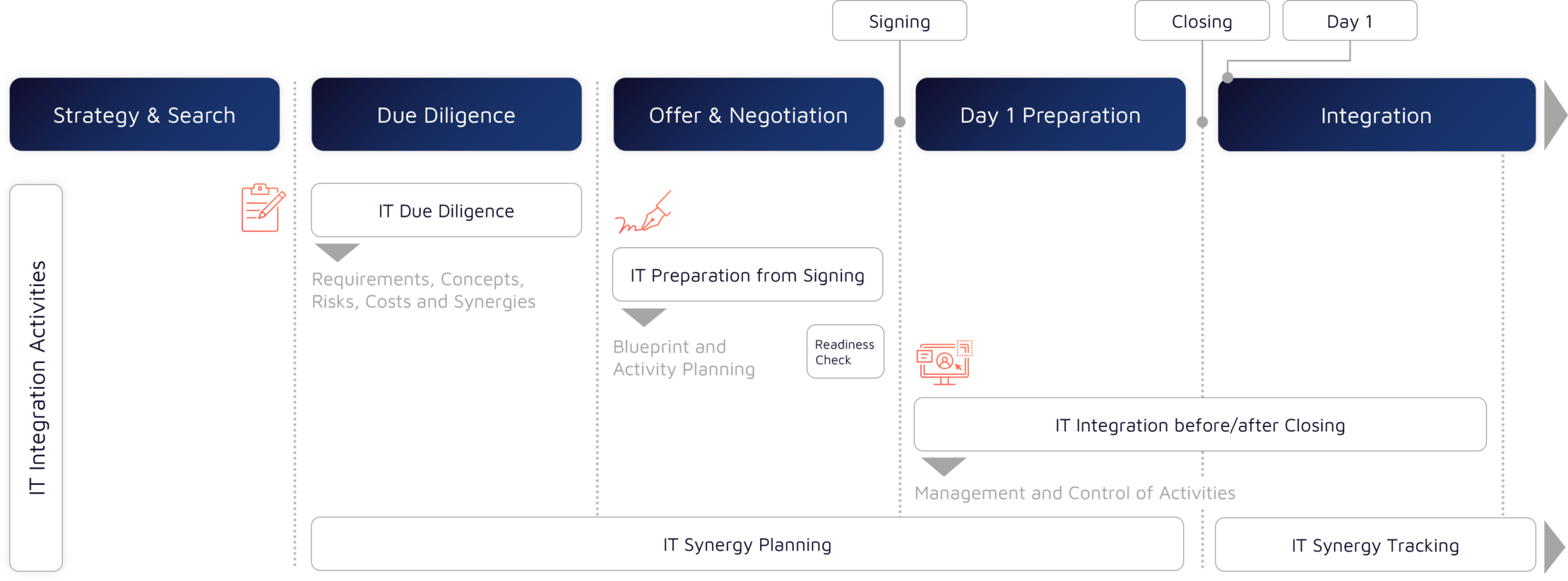During the first phase, a comprehensive project set-up was developed, including the establishment of a PMO (project management office) and the implementation of project governance. In addition, a detailed schedule was drawn up, risk management was established and regular deadlines, document standards, work packages and workstreams were defined in order to ensure a structured project process and standardise the understanding of all project participants.
In order to gain an overview of the existing IT infrastructure, the server and application landscape of the companies involved was evaluated as part of an in-depth analysis. Based on this, the target design and future operation model (architecture, schedule, risks, etc.), the carve-out concept, the runbooks and the cut-over plan were developed.
Finally, the requirements for infrastructure, applications etc. were documented, the first providers (e.g. ISP) were commissioned and the first hardware (including server hardware, laptops) was ordered.










